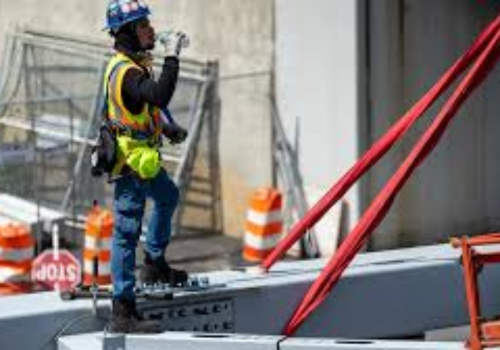
According to the Centers for Disease Control and Prevention (CDC), construction workers have one of the highest suicide rates—75% higher than men in the general population. In 2022, an estimated 6,000 construction workers died by suicide, exceeding work-related fatalities.
"When your own hands pose a greater threat than a jobsite accident, that's a crisis demanding action," says Brian Turmail, a representative for the Associated General Contractors of America. He acknowledges the industry's focus on physical safety but emphasizes the need to prioritize mental well-being.
A recent surge in construction projects, fueled by federal funding, has exacerbated the problem. Workers face long hours under harsh conditions, often separated from families for months. Financial instability, coupled with the risk of injuries and substance abuse, adds to the mental strain.
Hoffman Construction, has taken steps to address mental health concerns. They've created onsite spaces for relaxation and support groups, along with integrating mental health discussions into regular meetings.
Unfortunately, the industry continues to grapple with loss. Even with these efforts, a recent suicide on the project highlights the ongoing challenge.
The alarm bells first rang in 2016 when a CDC report revealed the high suicide rate among construction workers. Since then, industry groups have focused on breaking the taboo surrounding mental health. Initiatives include PSA campaigns, on-site resources, and training programs to equip employers with communication skills.
Bechtel Corporation, a major construction firm, has pledged $7 million towards a collaborative effort with the American Foundation for Suicide Prevention to reach construction workers with industry-specific programs.
Shannon Niles, a safety director, shares his own experience of witnessing a coworker's death on a jobsite. He describes bottling up the trauma, leading to substance abuse, until his family intervened. Niles emphasizes the cultural stigma within the industry that discourages help-seeking.
"We need to shed the tough-guy image," Niles says. "We're all human, and seeking help is a sign of strength."
The worker shortage adds urgency to the issue. The Associated Builders and Contractors estimate that the industry needs an additional 500,000 workers in 2024 alone.
"We invest heavily in training our workforce," says Mike Pugh, a safety manager. "Losing them due to mental health issues is not only a human tragedy but also a financial strain."
Pugh himself battled addiction following personal tragedies. He shares his story as a testament to recovery and the need for cultural change. The construction industry faces a complex challenge. It must prioritize worker well-being while ensuring project completion
The smartest construction companies in the industry already get their news from us.
If you want to be on the winning team, you need to know what they know.
Our library of marketing materials is tailored to help construction firms like yours. Use it to benchmark your performance, identify opportunities, stay up-to-date on trends, and make strategic business decisions.
Join Our Community






